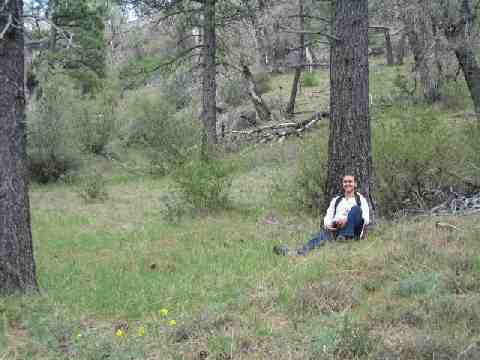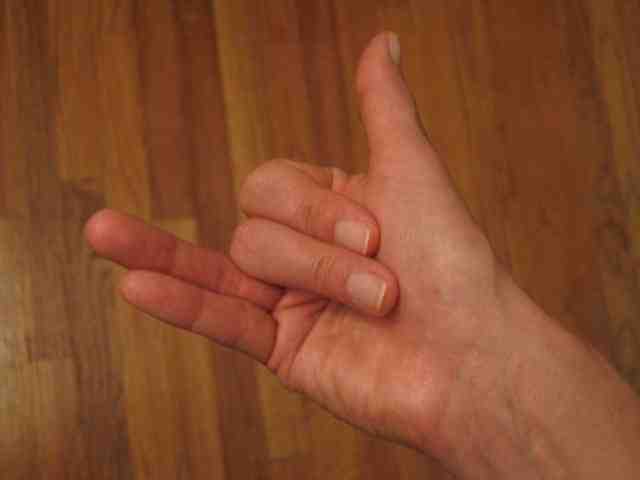Pranayama & Energy Work
Once, a teacher asked the students:
"What is the best way to build more energy in the body?"

"Breath work - Pranayama", one student replied.
"Practice Bandhas - the energy locks", someone else added.
"Visualize energy flowing into the body", a third student suggested.
"Consume light energy-giving foods, and eat less," was the fourth recommendation.
The teacher nodded in agreement. "These are all very good and effective. But they require an expenditure of energy. How can we get more energy without expending it?"
The listeners were silent.
After a moment, the teacher said: "Spend time in nature."
Nature is full of Prana, the vital life-force. Nature heals us, takes away the stress, and rebuilds our energy. This happens automatically, without our knowing, or doing anything about it.
# Spend time in nature every day
Out in the park, the forest, the mountains, the beach, or your own backyard garden.
Try to spend at least a few minutes each day.
There's no overdose. "Nature-drunk" is a real yogic state.
# Three-Part Breath Practice (Deergha Swasam)
This is the first Pranayama to begin with.
Common Immediate Benefits:
- profound stress reduction,
- nervous system relief,
- anxiety relief,
- improved digestion,
- full-body cellular and muscular relaxation,
- and improved sleep.
Deerga Swasam involves breathing sequentially into three parts of the lungs:
1. the abdomen (lower section of the lungs),
2. the ribcage, and
3. the chest.
Step by Step Instructions
1. On the inhalation, first, send the air to the bottom of the lungs (fill the abdomen); then, fill up the ribcage; and finally, fill up the chest.
2. On the exhalation, first, relax the chest and let out the air naturally; then, relax the ribcage; and finally, pull in the belly to complete the exhale.
3. Begin with ease, and let the breath deepen gradually.
4. Never breathe too deeply. Always keep the breath comfortably full.
5. At the top of the inhale, the chest should lift up gently. At the bottom of the exhale, the abdomen should be all the way in.
6. Start with 2 minutes. Build up to 7 minutes over 2 months.
7. Next, to amplify the relaxation effects and benefits, increase the length of the inhale and exhale each:
- Count the number of seconds on inhale and exhale - strive for the same length at first.
- When same length is comfortable (ex. 8 seconds in and 8-10 seconds out), increase the count of the exhale one second at a time. Perform Ujjaii technique on the exhalation to help lengthen it.
- Eventually, after months of practice, maintain at 12:24 ratio (12 seconds on inhale, 24 seconds on exhale).
For help and guidance, please Contact Slava.
According to yogis, we retain more energy on the exhale. So the longer the exhale, the better, as long as it is kept comfortable and without gasping.
# Practice Kapalabhati, (Skull-Shining Breath)
Kapalabhati Pranayama is one of the ancient Kriyas, Yogic Shatkarmas, or purification practices.
The name 'Skull-Shining Breath' implies purification of energy flow in and around the head/skull.
Kapalabhati Pranayama cleanses the lungs by stirring up the mucous built-up with forceful exhalations.
Kapalabhati makes a person more alkaline, and therefore, should be practiced with caution and gradually in order to avoid getting light-headed.
More blood flow to the head creates luster in the face and a brighter shine in the eyes, and is responsible for its other nickname: "the yogic cup of coffee".
You may also follow your existing Deerga Swasam practice with Kapalabhati.
# Practice Kumbhaka, Breath Retention
Any retention, any pause, should be savored and enjoyed fully.
It is as if you've just drank a healing cocktail on the inhale, let it seep into every fiber.
Or as if you've just released toxins on the exhale, enjoy the cleansed emptiness.
Only after you're comfortable with both Pranayama practices above, you may begin breath retention.
Warning: Stopping the breath for any length of time without preparation and guidance can be dangerous and detrimental to your health. It's a thin line from healing to disease. Please consult a qualified therapist first.
Antara Kumbhaka is the retention on the inhale. It should be practiced first.
In the beginning, simply allow the retention to happen naturally without any control.
If it doesn't happen naturally (because you don't have enough air), then your body isn't ready yet.
After a few months of Pranayama practice, your lungs should be ready for natural and spontaneous Antara Kumbhaka.
Pause for a second or two as you fill the lungs.
After a few rounds, pause for three or four seconds, savoring the breath. Feel as though the oxygen and Prana are sinking into the tissues.
Increase the retention to no more than 8 seconds, after a few weeks.
The whole practice should feel comfortable and natural.
Bahya Kumbhaka is the retention on the exhale.
Same caution and principles apply.
Begin with holding the air out for one or two seconds, after you've mastered Antara Kumbhaka.
Increase the retention to 16 seconds. This should take over a year. Gradually and comfortably.
Ideally, both Kumbhakas should be practiced together with Bhandas, which are physical movements to retain energy in the body, also known as "energy locks."
# Practice Nadi Suddhi, Alternate Nostril Breath
This Pranayama can be practiced concurrently with Deerga Swasam and Kapalabhati.
Nadi Suddhi is considered to be the most powerful practice for Brain Wave Optimization and the control of mental energy.
The main word to describe this practice is "BALANCE".
Nadi Suddhi balances the left and right nostril air flow, thereby affecting the left and right hemispheres of the brain.
Said to be the perfect preparation for a meditation practice, this Pranayama can be performed by itself or preceded by any of the above practices.
Instructions for Basic Nadi Suddhi:
Form a soft fist with the right hand, and stick out the thumb and the last two fingers, making the configuration known as the Vishnu Mudra.

The thumb is used to block the right nostril, and the fingers to block the left.
Bring the hand up to the face, block the right nostril and exhale through the left nostril.
Once the exhale is complete, inhale through the left.
Once the inhale is complete, switch nostrils (i.e. block the left one with the two fingers), and exhale through the right.
The traditional pattern of Nadi Suddhi Pranayama is 'Exhale, inhale, and switch'.
Keep the breath comfortable and smooth.
No need for deep breath in the beginning.
Focus on balancing the left and the right air flow AND on balancing the inhale and the exhale.
No need for Ujjaii breath, or retention of the breath.
Start with 2 minutes. Extend to 10-20 minutes.
Instructions for Advanced Nadi Suddhi:
STEP 1:
Once you feel comfortable with 10-20 minutes of Nadi Suddhi, begin to lengthen the breath.
Again, this must be done slowly and gradually.
Count the seconds on the exhale and the inhale. Establish a comfortable rhythm. For example: "Inhale for 6 seconds, exhale for 8 seconds."
Keep that for a few days until it becomes 'too easy'.
STEP 2:
Then, increase the duration of the inhale and the exhale by one or two seconds. For example: "Inhale for 7 seconds, exhale for 10 seconds."
Keep that for a few days till it becomes 'too easy'.
You get the idea?
Continue gradually until you reach 12 seconds on the inhale. At that point, there is no need to lengthen your inhale anymore.
STEP 3:
Now, work on the exhale only.
The goal is to achieve the 1:2 ratio (inhale for 12 seconds, exhale for 24 seconds).
Practice until you can sustain that rhythm for 10 minutes comfortably.
STEP 4:
Then, begin Antara Kumbhaka (follow instructions above).
Second by second, build gradually.
Practice until the retention is 12 seconds long (1:1:2 ratio).
You may also incorporate the use of Bandhas, the yogic energy locks, to retain more energy.
STEP 5:
Now, you may start practicing Bahya Kumbhaka (follow instructions above).
Start with one or two seconds of holding the air out.
Build up to 48 seconds!
That's not a typo. But this should take many years.
|
At this point, you may extend Antara Kumbhaka to 24 seconds.
The final ratio is 1:2:2:4.
inhale for 12 -- hold for 24 -- exhale for 24 -- hold for 48
Some yoga schools recommend the same ratio with 10, 20, 20, 40 seconds respectively. That's OK, too, as long as you get there gradually and over many years.
Bandhas, energy locks, should be practiced during Bahya Kumbhaka.
At this point, you should be having Pranayama for dinner, and feel fully satisfied and energized.
In fact, you may easily turn into a 'breatharian' and sustain your body solely on the breath.
Namaste,
~ Slava
|